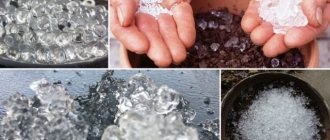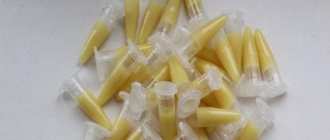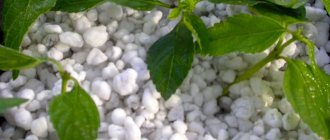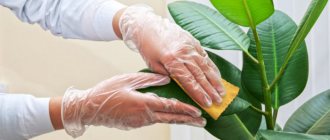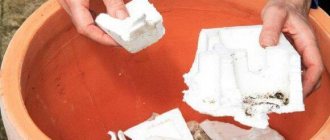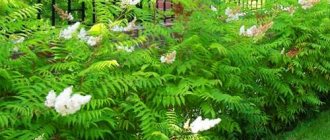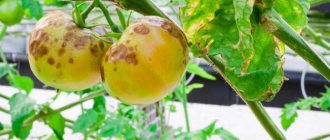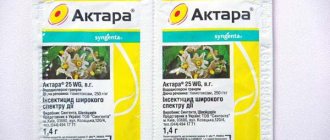More and more modern gardeners are using sphagnum moss for indoor plants, considering it the best assistant. Sphagnum is a spore-bearing perennial that does not have a root system. Each specimen is a thin, continuously branching stem, the lower part of which dies off as it grows.
The stems and branches of sphagnum moss are covered with small scaly leaves arranged in a spiral. The leaves are based on two types of cells: small, narrow-tubular, green and hollow, colorless. In the former, photosynthesis occurs, through the latter, the moss receives moisture and nutrition. Hollow cells are capable of absorbing moisture up to 20 times their own weight. This ability gave the plant its name: sphagnum means “sponge” in Greek.
[adsp-pro-4]
Under natural conditions, sphagnum moss lives in the temperate climate of the northern hemisphere, but it can also be found in the subtropics. The most favorable conditions for the growth of sphagnum are the surface of swamps, but it can develop on tree trunks, stones, metal and even glass.
Useful properties of sphagnum for indoor plants
Sphagnum moss has three qualities that are indispensable for flowers grown at home:
- Breathability. When adding sphagnum, the substrate becomes maximally loose.
- Hygroscopicity . Moss absorbs a large amount of moisture and releases it to the soil gradually. As a result, the earthen ball is always moist, but not wet.
- Antibacterial properties. Moss contains the substance sphagnol, which disinfects the soil. If it is present in the soil mixture, the root system is protected from rotting and fungal development.
Sphagnum has excellent antibacterial properties
Reference. Moss can be used in green and dried form. After drying, all the beneficial properties of the plant are preserved.
How to prepare sphagnum yourself?
Sphagnum moss is harvested in August-September. Moss brought from the forest must be squeezed out of excess water, and tangled debris and insects must be removed from it. Then the sphagnum is laid out on a bed of lutrasil or spunbond in partial shade and turned over regularly. Dried sphagnum moss is stored packed in a plastic bag in the vegetable section of the refrigerator or in a cool basement. Before use, it must be wetted and squeezed out; it is also recommended to disinfect it: sphagnum has bactericidal, but not insecticidal properties, and eggs or insect larvae can be preserved in it. To disinfect, moss is placed in a colander and doused with boiling water.
All about sphagnum moss for growing plants I am opening a new topic “Everything about sphagnum moss for growing plants”, in which I want to find out the following: 1. What moss (which varieties) can be used for growing plants? Is only sphagnum moss suitable for this? 2. How to properly prepare moss? 3. When or in what cases is it advisable to use moss for the care and propagation of plants? 4. How exactly can moss be used - ways to use moss? 5. What are the purposes of using moss for plant care and plant propagation? 6. Do you use moss to grow plants? 7. Is it possible to do without using moss when growing plants? 8. What are your personal observations and practical results of using moss?
Sphagnum is an indispensable assistant for growing streptocarpus viewtopic.php?f=188&t=11029
Ways to use sphagnum moss for indoor plants
Not all gardeners know for certain why sphagnum moss is used when growing indoor plants. The beneficial properties of moss allow it to be used for various purposes in indoor floriculture:
- Addition to soil mixtures when growing plants. Moss improves soil structure. Gives it lightness, breathability and moisture absorption. Sphagnum absorbs excess moisture, preventing the roots from being in wet soil. This same property saves the roots from drying out. Moisture is gradually absorbed by the roots as needed. But moss cannot be added to the soil in an amount of more than 10%, as it increases the acidity of the substrate. Although this quality is indispensable for growing azaleas and violets, since these plants require soil with high acidity.
- Lining a flower pot to maintain air humidity. When growing plants that require high air humidity, cover the surface around the pot with moss. When watering sphagnum, the water begins to evaporate, releasing moisture to the crown of the plant.
- Mulching the soil surface. It is not a good idea to constantly keep moss on the surface of the soil in a pot, as this will create high humidity underneath and the roots may rot. But if the owners need to leave for 7-10 days, moss will help retain moisture in the soil. After arrival, it must be removed from the pot.
Sphagnum moss is placed on the surface of a ball of earth to retain moisture.
- Rooting leaves and cuttings. Thanks to its bactericidal properties, moss prevents rotting of plant cuttings and leaves during their propagation. The most effective use of sphagnum is when propagating plants by air layering. For rooting, a cutting, leaf or air layer is placed in a mixture of moistened moss and soil in a 1:1 ratio and placed on a tray. When replanting plants rooted using this method, moss is added to the soil in a ratio of 1:3. This rooting method is recommended for violets when grown from leaves, as well as for orchids when forced. Do not use moss when rooting succulents!
- Germination of small seeds. The seeds of some crops require access to light to germinate. Therefore, it is recommended to distribute them over the surface of the soil and not fill them on top. But with such sowing, the seeds often dry out without sprouting. If small seeds are placed on moistened moss and covered with film. Germination occurs without problems. Sphagnum lightly envelops the seeds, preventing them from drying out and at the same time providing them with access to light.
- Lining the trunks of plants with aerial roots. It is effective to use sphagnum moss to wrap the aerial roots of an orchid. Thus, truly tropical conditions are created for this capricious flower.
- Storing bulbs and tubers. Using sphagnum moss to wrap tubers and bulbs of heat-loving flowers dug from open ground helps prevent them from rotting and drying out. Moss will not only retain the necessary moisture in the bulbs and tubers, but will also have an antiseptic effect. Tubers and bulbs stored in sphagnum are not affected by mold and gray mold and survive safely until spring planting.
Sphagnum moss is often used to cover the aerial roots of orchids.
How to use sphagnum?
In the garden, vegetable garden and caring for indoor plants, sphagnum is absolutely irreplaceable. It is used:
For planting plants and rooting cuttings . Soil with the addition of sphagnum has optimal breathability, and the antibacterial compounds contained in sphagnum prevent root rot.
For storing planting material and harvest . Tubers, bulbs and fruits, placed in storage with layers of sphagnum, are protected from mold and rot, and the loose structure of sphagnum guarantees good ventilation.
As drainage when planting indoor plants . Sphagnum can be used both in combination with expanded clay and on its own. It is especially convenient for small pots, since it takes up much less volume compared to expanded clay.
For mulching the soil when forcing bulbs . Sphagnum maintains soil moisture and protects it from mold.
For storing and shipping plants . Thus, rose seedlings with an open root system are stored in the refrigerator until planting, wrapping the roots in damp sphagnum: it prevents them from drying out. When sending plants by mail, sphagnum is used for the same purpose.
To protect the crown of standard roses during the first time after planting. The grafting site and part of the crown are covered with wet moss, the entire crown is wrapped on top with damp burlap, then with ordinary lutrasil. The rose is left in this state for several weeks. Periodically check the humidity and how the buds develop on the crown. The same stimulation helps a standard rose that has not overwintered well to get into shape.
As an additive to the substrate when growing indoor plants : Saintpaulia, gloxinia, streptocarpus, begonias, dracaenas, aroids, bromeliads and orchids. Soil enriched with sphagnum becomes loose and breathable. Adding sphagnum allows you to give the soil a slightly acidic reaction, which is necessary for some indoor plants. When growing epiphytes, sphagnum can serve as the main substrate.
Application
Having become acquainted with its exceptional properties, it is easy to understand how important sphagnum moss is when cultivating domestic plants; its use in floriculture is extremely diverse.
- Rooting cuttings in a humid, air-rich environment that has antiseptic properties - what could be better? And such a medium is prepared from sphagnum or based on it. This soil base is especially suitable for the propagation of Gesneriaceae.
- It is difficult to imagine the composition of substrates for orchids and other epiphytic plants without the use of sphagnum as one of the main components. Such soil is considered ideal for epiphytes.
- Adding sphagnum to soil mixtures significantly improves their quality and ensures the best water and air conditions for the root system. The moisture is distributed evenly throughout the entire volume of the pot and does not stagnate anywhere.
- A slight acidification of the soil is necessary for azaleas and a number of other plants. We will again turn to sphagnum for help.
- Reproduction by air layering is successfully carried out if the shoot area is wrapped in moss that creates a moist environment.
- Creating conditions for stimulating the formation of aerial or adventitious roots can also be achieved using a sphagnum “cushion”.
- Sowing seeds or spores into moist sphagnum moss gives a high percentage of their germination. This method of sowing is especially indicated for seeds that germinate slowly and are prone to rotting.
- Providing more comfortable living conditions for plants with aerial roots (monstera, ivy) is another way to use it.
- Creating a humid environment around flowers suffering from too dry air - white moss will help with this. And during the heating season, almost all of our green friends have this problem.
- Forcing bulbous and some rhizomatous plants in a sphagnum substrate ensures the production of clean, healthy flowers.
- It is very convenient to use white moss for transporting flower plants, their cuttings and seedlings: it will retain moisture, protect against infections, and create a soft layer that protects the shoots from injury.
- Storing bulbs or cuttings in sphagnum moss ensures their preservation, creating an optimal moisture balance. Moss absorbs water from an overly humid environment and, if necessary, compensates for excessive dry air.
- Making hanging pots using sphagnum allows you to add originality to the interior, while providing favorable conditions for the development of plants.
- A drainage device is another method of application. Moss is placed on the surface of the main drainage material. A soft base is created for the roots, while simultaneously regulating the humidity of the substrate.
- Sphagnum moss is used in floriculture to create a layer on the soil surface that protects against rapid evaporation of water. This is important for flowers that are sensitive to fluctuations in humidity levels. This technique also allows you to increase the aesthetics of flowerpots and make them somewhat similar to natural corners.
- It will be easier to ensure the safety of indoor plants left unattended for a long time, for example, during vacation, if you use sphagnum moss. For this purpose, it is well moistened and placed on the surface of the soil. If the flowers grow in unglazed clay pots, then they can be covered with moss on all sides.
- Creating flower arrangements (live or dry) using white moss makes them expressive and touching.
How to prepare sphagnum moss
If you are going to use live moss, especially one collected by yourself, it is recommended to sterilize the sphagnum moss so as not to introduce dirt and microbes into the plant.
To sterilize, pour boiling water over the moss for three to five minutes, then take it out, squeeze it out a little and leave it to dry on the windowsill. Dry sphagnum has many advantages, including good moisture retention and breathability.
But from an aesthetic point of view, living sphagnum moss looks better. To keep it alive, keep it in water at 45 degrees for about 30 minutes. It can then be packed in plastic bags and stored in a cool place. The moss will remain alive for 3-4 months.
How to use moss to care for orchids
It is not recommended to plant orchids in regular soil; a breathable, moist substrate is better suited for them. Flower growers mix pine bark with coconut fiber and sphagnum. This composition ensures good growth for the plant and protects the roots from rotting and drying out.
In summer, sphagnum shoots are wrapped around the aerial roots of orchids to increase humidity levels.
What is sphagnum moss and what are its properties?
This is swamp moss, and it can be found in old raised bogs in almost all regions with a temperate and cool climate. Although in the middle zone you have to try very hard to find such a swamp. It is quite easy to distinguish sphagnum from other mosses - it is white. Although this is not entirely true, it acquires a white color when dried, while sphagnum moss growing in a swamp has a light green color, which also makes it easily distinguishable from other rich green mosses. In the northern regions, such swamps (white swamps) are found everywhere and it is there that sphagnum moss is extracted industrially. For what? The fact is that sphagnum moss, in addition to its excellent hygroscopic properties, also has other, no less remarkable properties. It is used in construction as thermal insulation, and in medicine as a plant with excellent bactericidal properties. Sphagnum moss has also been used in perfumery. And these are not all areas of its application.
Sphagnum moss for propagating flowers and indoor plants
Every lover of indoor flowers and plants often faces the question of propagating their favorites. Successful Russian collectors and violet breeders can help you learn about one of the most effective methods. Of all the rooting methods they tried, the best results were achieved by rooting leaf violet cuttings in clean living sphagnum moss with wick irrigation.
Sphagnum (Sphagnum, sphagnum, peat moss, white moss) is a perennial bog moss that forms the so-called sphagnum bogs. Its peculiarity is that it actually has no roots - its lower part gradually dies off and turns into peat, while the upper part continues to grow. Sphagnum moss is also called “white moss”, and the places where it grows are called “white moss”.
The three most important properties of sphagnum for floriculture and plant growing are:
- amazing hygroscopicity;
- excellent breathability;
- antibacterial properties.
Hygroscopicity is the property of sphagnum moss to absorb water in huge quantities: up to 20 parts by weight of water per one part by weight of sphagnum moss, which is 6 times higher than the ability of cotton wool! Using it as part of soil mixtures will always maintain a sufficient level of moisture in the substrate without waterlogging the soil! This property is achieved by the structure of the moss itself - its stem and leaves contain hollow air-bearing reservoir cells, thanks to which sphagnum absorbs water over its entire surface and retains it for a long time!
Air permeability is due to the same hollow cells. That is, the soil with the addition of sphagnum turns out to be quite moist, but at the same time light and loose, which contributes to the well-being of the plant root system!
The antibacterial, disinfectant and antifungal properties of sphagnum have even been used in medicine, not to mention plants! The percentage of rotting cuttings when propagated in sphagnum is the lowest compared to all other methods!
